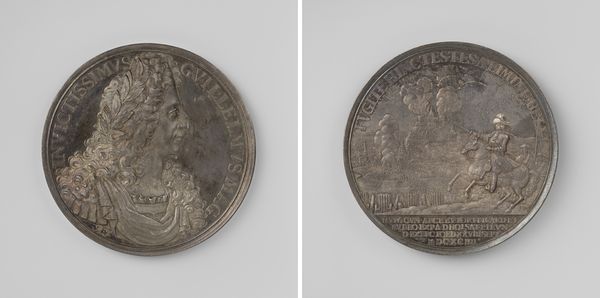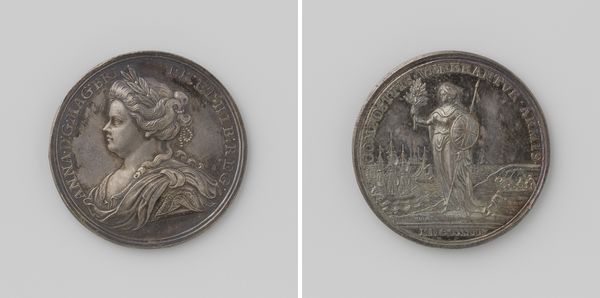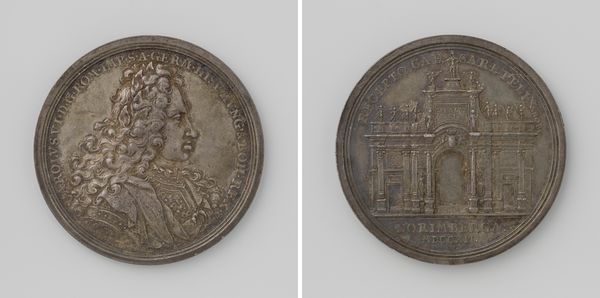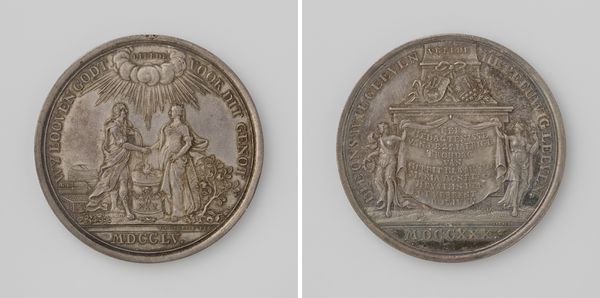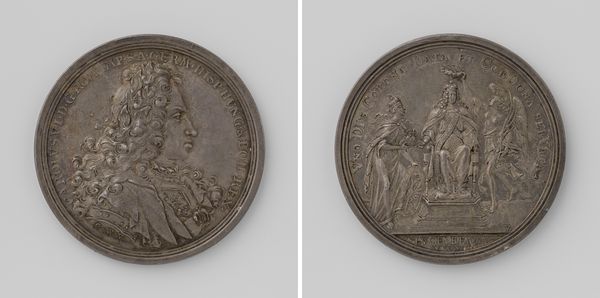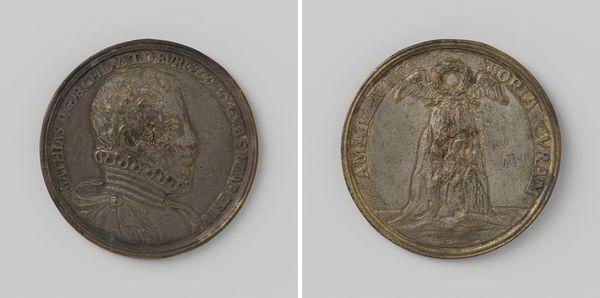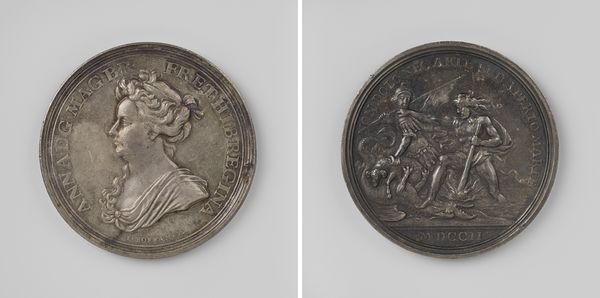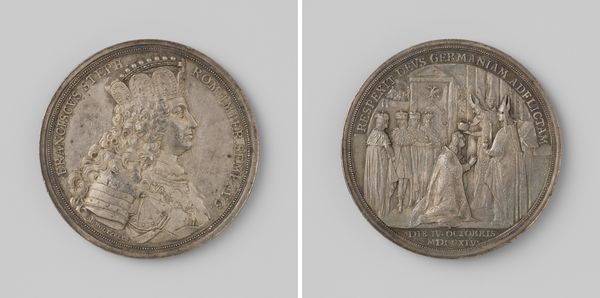
print, metal, engraving
#
portrait
#
baroque
# print
#
metal
#
sculpture
#
engraving
Dimensions: diameter 4.4 cm, weight 29.76 gr
Copyright: Rijks Museum: Open Domain
Editor: This is "Quesnoy ingenomen," a metalpoint engraving from 1712 by Georg Wilhelm Vestner, housed at the Rijksmuseum. It looks like a commemorative coin. I'm immediately struck by how it presents a powerful leader on one side, and a seemingly conquered territory on the other, almost like a story of dominance encapsulated within this small object. How do you interpret this work? Curator: This piece speaks volumes about power dynamics and the construction of historical narratives. It is not just about remembering a military victory but is deeply intertwined with ideologies of imperialism and the representation of the 'other'. The portrait likely serves to legitimize the ruler's authority through this conquest. How does the depiction of the city strike you in relation to the leader's portrait? Editor: The city seems almost... diminutive, placed in contrast to the regal portrait. It definitely makes the leader appear more imposing, as if he's single-handedly responsible for claiming it. Curator: Precisely. The engraving is working to create a specific kind of historical record. We have to question whose narrative it serves and what voices are silenced or erased in this visual representation. Think about the concept of "history is written by the victors." How might the citizens of Quesnoy have seen this event? Editor: That’s a good point. It highlights a very one-sided story, almost like propaganda. Curator: Yes! And understanding that inherent bias allows us to deconstruct these seemingly straightforward historical artifacts, inviting us to critically examine how power, gender, and identity are performed and solidified through art. What have you gained from this piece of knowledge? Editor: It makes me realize that even something as simple as a coin can be a powerful tool for shaping perceptions and perpetuating inequalities. Curator: Absolutely. Looking at art this way offers us pathways to challenge existing hegemonies, promoting diverse voices, intersectional approaches and social justice in the narratives we consume.
Comments
No comments
Be the first to comment and join the conversation on the ultimate creative platform.
